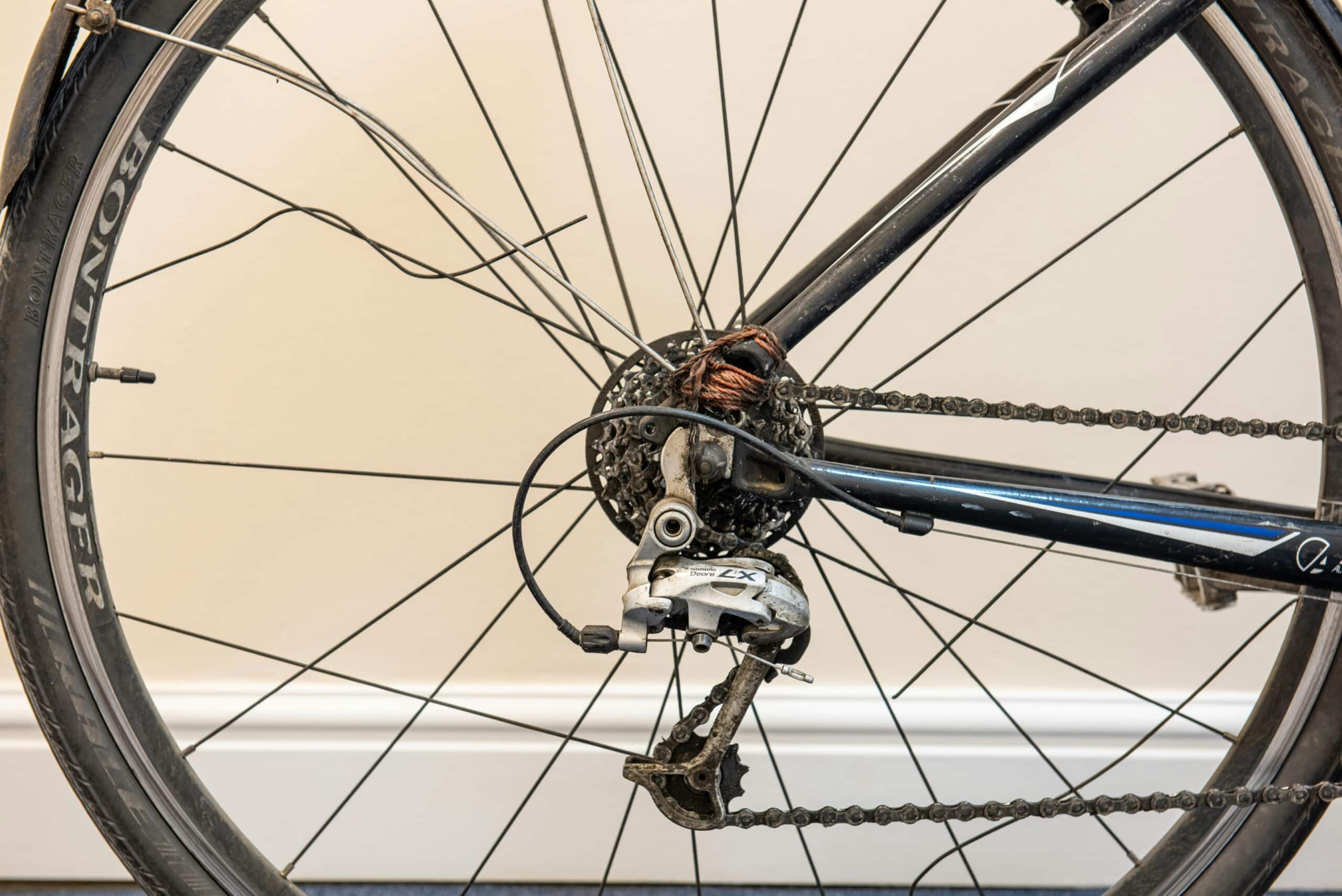
Imagine this: You’re riding your bike home, navigating traffic like any other day, when a car suddenly veers too close. You crash. The impact is fast, but the consequences—medical bills, insurance stress, and lost wages—can linger for months. Bicycle accident victims often don’t realize just how complex these situations can be. Even when the fault isn’t clear-cut and both parties may share some responsibility, the law still provides vital protections to help injured cyclists seek fair compensation and rebuild after an accident.
In this guide, we’ll walk you through the essential legal rights every bicycle accident victim should know. Whether you’re navigating insurance claims, dealing with severe injuries, or wondering how to seek compensation, knowing your rights can make a significant difference in your bicycle accident case.
Understand Your Legal Protections as a Cyclist
Bicycle riders have the same rights and responsibilities as car drivers in many states, including Nevada, Colorado, and California. When bicycle accidents occur, the law treats injured cyclists as vulnerable road users who deserve protection.
Key Legal Protections Include:
The Right to Share the Road: Under Nevada Revised Statutes § 484B.270, motor vehicle drivers must provide at least three feet of space when passing bicycle riders.
Bike Lane Usage Laws: In California, the Vehicle Code § 21208 mandates that cyclists use bike lanes when available, but drivers must still yield when crossing into those lanes.
Helmet Laws & Age Rules: While some states don’t require adults to wear helmets, insurers in certain cases may raise helmet use during discussions about fault or responsibility.”
Understanding these applicable laws and the broader regulations governing bicycle accidents gives accident victims a stronger foundation when seeking legal recourse.
Immediate Steps After a Bicycle Accident
If you’re involved in a bicycle accident, your actions at the accident scene can significantly impact your personal injury claim. Prioritize your safety and legal rights from the very start.
What to Do Immediately:
Seek medical attention right away—even if injuries aren’t immediately visible. Many severe injuries, like head injuries, manifest later.
Call 911 to file an official police report. This report can be critical when determining liability.
Gather evidence such as photographs of the accident scene, vehicles involved, visible injuries, and property damage.
Collect witness statements and contact information. Eyewitnesses can back up your version of events.
Exchange insurance and contact details with the other party involved in the accident, and document this information thoroughly.
Every detail you document strengthens your insurance claim and personal injury lawsuit later. If you’re unable to gather evidence due to your injuries, ask a bystander or a loved one for help.
Who’s Liable? Understanding Driver Negligence
Determining liability is the backbone of every bicycle accident case. Often, driver negligence plays a major role in bicycle accident injuries.
Common Forms of Driver Negligence Include:
Distracted driving (texting, eating, or adjusting the radio)
Failure to follow traffic laws (such as yielding or signaling)
Driving under the influence
Turning across a bike lane without checking for cyclists
The True Cost of a Bicycle Accident
The physical and financial toll of a bicycle accident extends far beyond the crash itself. Bicycle accident victims often face significant injuries, long-term recovery, and unexpected medical expenses.
Common Injuries Include:
Head injuries (even with helmets)
Broken bones and fractures
Spinal trauma
Road rash and lacerations
Beyond physical suffering, accident victims often deal with:
Medical bills and ongoing treatment
Lost wages due to missed work
Health insurance complications
Property damage such as the bicycle and gear
Understanding the full scope of your losses after a bicycle accident involves more than just adding up medical bills, bicycle lawyer fees, or tracking a single accident injury—it’s about recognizing both the visible and sustained injuries that affect long-term recovery.
Economic damages might include treatment costs, lost wages, and property damage, while noneconomic damages can cover pain, emotional distress, or a lasting impact on your daily life. These factors often go overlooked when navigating the insurance process alone. Taking the time to assess both the visible and long-term effects of the accident can lead to a more accurate and fair compensation outcome.
Why Seeking Prompt Medical Attention Matters
Seeking prompt medical attention isn’t just crucial for your health—it strengthens your case. Insurance companies often use delays in treatment to downplay the severity of your bicycle accident injuries.
By keeping detailed medical records and following through on all recommended treatments, you build strong evidence that connects your injuries directly to the accident.
Always:
Visit an ER or urgent care the same day
Follow up with your primary care doctor
Keep a journal documenting pain levels, treatments, and how the injuries affect your daily life
Your medical records and bills play a central role in supporting your personal injury claim and help establish the extent of the sustained injuries related to the accident. They help establish the link between the accident and your injuries, offering clear documentation of the care you’ve received and the costs you’ve incurred. This information can be essential during negotiations or if the case moves toward legal proceedings, ensuring that the full impact of the accident is clearly understood.
How Insurance Works After a Bicycle Accident
Navigating the insurance claim process can be overwhelming—especially while recovering. You may need to file a claim against the at-fault party’s insurer, your auto policy (if applicable), or your health insurance provider.
Be cautious when speaking with insurance companies. Their goal is to minimize payouts—not support your recovery or ensure full and fair compensation.
Steps to Protect Your Claim:
Report the accident to your insurance provider within the required timeframe.
Do not admit fault or provide a recorded statement without legal consultation.
Keep detailed accident reports, including the police report, medical bills, and witness statements.
If you’ve received a low settlement offer or had your claim denied, that doesn’t have to be the end of the process. You can challenge a denied claim, submit more evidence, or take further legal steps based on your case’s circumstances to seek a resolution that more accurately reflects the extent of your injuries and losses.
Know the Law: Comparative Negligence and Time Limits by State
Understanding how your state handles fault and deadlines can make or break your bicycle accident case. Each state sets its own rules for comparative negligence and statutes of limitations, both of which directly affect how much compensation you can receive—and whether you’re still eligible to file a claim.
Comparative Negligence: Shared Responsibility and Your Rights
In many bicycle accidents, the fault is not one-sided. The law acknowledges that both the cyclist and the motor vehicle driver may have contributed to the crash. Comparative negligence laws determine how that shared responsibility affects your ability to recover damages.
Nevada – Modified Comparative Negligence
Under NRS 41.141, you can recover damages if your share of fault is not greater than the combined negligence of the defendants. This means you must be 50% or less at fault to qualify for compensation. The court reduces your compensation by your percentage of fault.
For example, if you’re 30% at fault and the total damages are $100,000, you may recover $70,000. If your fault exceeds 50%, you cannot recover any damages.
If a defendant settles before trial, the jury does not consider their fault or settlement amount. The judge deducts that amount from your award. When multiple defendants are involved, each pays only their share—unless the case involves strict liability, intentional harm, toxic spills, or certain product-related injuries.
Colorado – Modified Comparative Negligence
Under C.R.S. § 13-21-111, you can recover damages if your share of fault is less than that of the defendant. This means you must be 49% or less at fault to qualify for compensation.
The court or jury reduces your award based on your percentage of negligence. If your fault equals or exceeds the defendant’s, the law bars you from recovering any damages.
California – Pure Comparative Negligence
California uses a pure comparative negligence system, established by the California Supreme Court in Li v. Yellow Cab Co., 13 Cal.3d 804 (1975). This rule allows you to recover damages no matter how high your percentage of fault is—even if you are 99% at fault. The court simply reduces your compensation based on your level of responsibility.
For example, if you suffer $100,000 in damages and the court finds you 30% at fault, you can still recover $70,000.
In addition, California Civil Code § 1431.2, part of Proposition 51, limits how courts assign non-economic damages (like pain and suffering) when multiple defendants are involved. Each defendant pays only their share of fault for those damages, rather than splitting the total amount equally.
California’s approach ensures that even when you share responsibility, you still have a legal path to compensation for both financial losses and personal suffering.
Statutes of Limitations: Don’t Miss the Deadline
Each state gives you a limited time to file a personal injury lawsuit after a bicycle accident. If you miss the deadline, the court may dismiss your case, even in situations involving serious injuries or strong claims.
Nevada: You have 2 years from the accident date to file a lawsuit. (NRS § 11.190(4)(e))
Colorado: You have 2 years (Colorado Revised Statutes §13-80-102 (1)(a)) or 3 years if the accident involved a motor vehicle (Colorado Revised Statutes §13-80-101(1)(n)).
California: You have 2 years to file a personal injury lawsuit (Cal. Civ. Proc. Code §335.1). If your accident involves a government vehicle, you must file a government claim within 6 months (Cal. Gov. Code §911.2).
Why These Laws Matter
Knowing how your state handles fault and deadlines protects your right to seek compensation. Misunderstanding these rules—or waiting too long—can cost you the chance to recover damages for medical expenses, lost wages, or pain and suffering. Learn your legal responsibilities and rights early so you can take informed action.
Legal Support Makes a Significant Difference
The legal process following a bicycle accident is complex. From gathering evidence to negotiating with insurance companies, a bicycle accident attorney handles what you shouldn’t have to—especially when you’re recovering.
Hiring a dedicated bicycle accident lawyer gives you access to:
Case-building strategies tailored to personal injury law and supported by experienced attorneys who understand the broader implications of traffic-related injuries
Legal representation in court if the case escalates
Negotiation for fair settlement or trial compensation, guided by a skilled attorney familiar with complex bicycle accident litigation
Guidance on the full range of legal options, including potential routes like mediation or litigation.
Your Rights Matter
Bicycle accidents change lives in a second, but knowing your legal rights can help you take back control. From driver negligence and medical expenses to insurance battles and legal protections, the road to recovery is smoother with the right support.
You don’t have to face these legal battles alone. If you or someone you love is navigating the aftermath of a bicycle accident, seek justice with Bourassa Law Group, our legal team that understands what’s at stake.
Reach out to us for a free consultation.Our team is dedicated to guiding injured cyclists through the complexities of the legal process and helping them pursue the compensation to which they may be entitled. We’re here to support you with clarity, care, and a commitment to justice.





